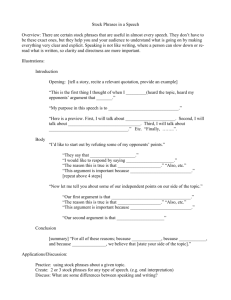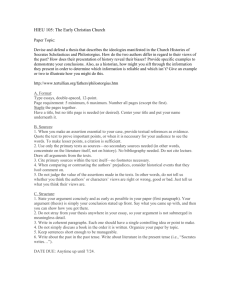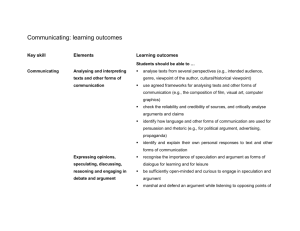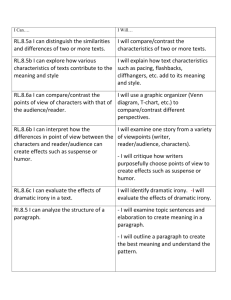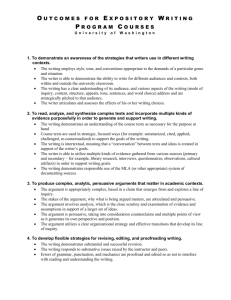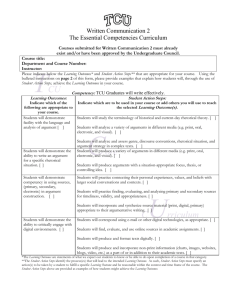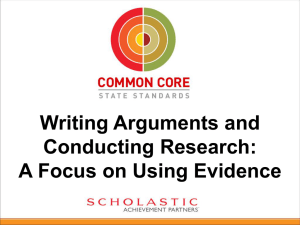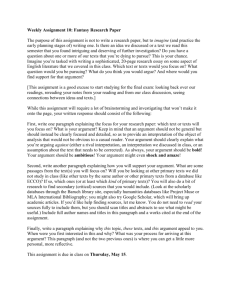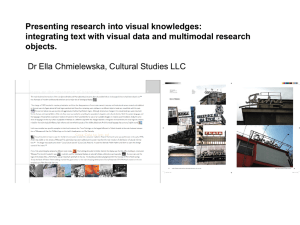6-8 InformationQuestionStem
advertisement
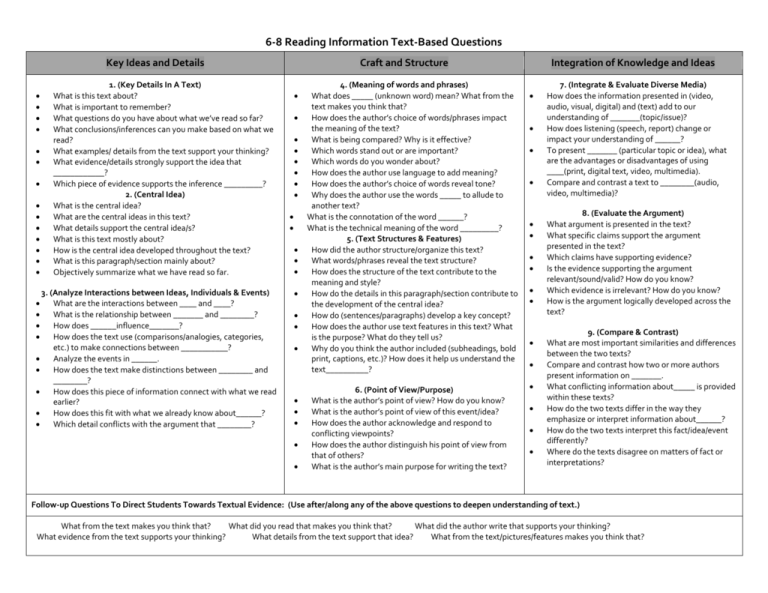
6-8 Reading Information Text-Based Questions Key Ideas and Details 1. (Key Details In A Text) What is this text about? What is important to remember? What questions do you have about what we’ve read so far? What conclusions/inferences can you make based on what we read? What examples/ details from the text support your thinking? What evidence/details strongly support the idea that ____________? Which piece of evidence supports the inference _________? 2. (Central Idea) What is the central idea? What are the central ideas in this text? What details support the central idea/s? What is this text mostly about? How is the central idea developed throughout the text? What is this paragraph/section mainly about? Objectively summarize what we have read so far. 3. (Analyze Interactions between Ideas, Individuals & Events) What are the interactions between ____ and ____? What is the relationship between _______ and ________? How does ______influence_______? How does the text use (comparisons/analogies, categories, etc.) to make connections between ___________? Analyze the events in ______. How does the text make distinctions between ________ and ________? How does this piece of information connect with what we read earlier? How does this fit with what we already know about______? Which detail conflicts with the argument that ________? Craft and Structure 4. (Meaning of words and phrases) What does _____ (unknown word) mean? What from the text makes you think that? How does the author’s choice of words/phrases impact the meaning of the text? What is being compared? Why is it effective? Which words stand out or are important? Which words do you wonder about? How does the author use language to add meaning? How does the author’s choice of words reveal tone? Why does the author use the words _____ to allude to another text? What is the connotation of the word ______? What is the technical meaning of the word _________? 5. (Text Structures & Features) How did the author structure/organize this text? What words/phrases reveal the text structure? How does the structure of the text contribute to the meaning and style? How do the details in this paragraph/section contribute to the development of the central idea? How do (sentences/paragraphs) develop a key concept? How does the author use text features in this text? What is the purpose? What do they tell us? Why do you think the author included (subheadings, bold print, captions, etc.)? How does it help us understand the text__________? 6. (Point of View/Purpose) What is the author’s point of view? How do you know? What is the author’s point of view of this event/idea? How does the author acknowledge and respond to conflicting viewpoints? How does the author distinguish his point of view from that of others? What is the author’s main purpose for writing the text? Integration of Knowledge and Ideas 7. (Integrate & Evaluate Diverse Media) How does the information presented in (video, audio, visual, digital) and (text) add to our understanding of _______(topic/issue)? How does listening (speech, report) change or impact your understanding of ______? To present _______ (particular topic or idea), what are the advantages or disadvantages of using ____(print, digital text, video, multimedia). Compare and contrast a text to ________(audio, video, multimedia)? 8. (Evaluate the Argument) What argument is presented in the text? What specific claims support the argument presented in the text? Which claims have supporting evidence? Is the evidence supporting the argument relevant/sound/valid? How do you know? Which evidence is irrelevant? How do you know? How is the argument logically developed across the text? 9. (Compare & Contrast) What are most important similarities and differences between the two texts? Compare and contrast how two or more authors present information on _______. What conflicting information about_____ is provided within these texts? How do the two texts differ in the way they emphasize or interpret information about______? How do the two texts interpret this fact/idea/event differently? Where do the texts disagree on matters of fact or interpretations? Follow-up Questions To Direct Students Towards Textual Evidence: (Use after/along any of the above questions to deepen understanding of text.) What from the text makes you think that? What did you read that makes you think that? What did the author write that supports your thinking? What evidence from the text supports your thinking? What details from the text support that idea? What from the text/pictures/features makes you think that? 6-8 Reading Information Text-Based Questions Enduring Question Purpose: • The purpose of this question is to show students how ideas are developed across a text/s. • This is a question students consistently think about and discuss throughout each pivotal passage to help them uncover the theme. • This is the last question asked after each pivotal passage to build up to the culminating question. Examples: (Choose one or write your own) • • • • • • • • What does the author want us to understand/learn? How is the author’s thinking developing/changing? What are we learning about ______? What is this text/section about? What information is important to remember? What information does the author want us to remember? How does the author emphasize the point that__________? What information or ideas does the text present? Culminating Question Purpose: This question will be asked to engage the class in an extended discussion about the theme. Students will also answer this question in writing. (constructed response) Examples: (Choose one or write your own) • • • • • • • • What is the author’s main purpose for writing this text? Why did the author write this text? What is the author’s point of view of_______? What is the text telling us about ________? How does the author develop the idea that _______ throughout the text? Throughout the text the author argues/claims __________. How reasonable is this claim and why? What is the text really about? What is the central idea of the text? What details are important to remember?

